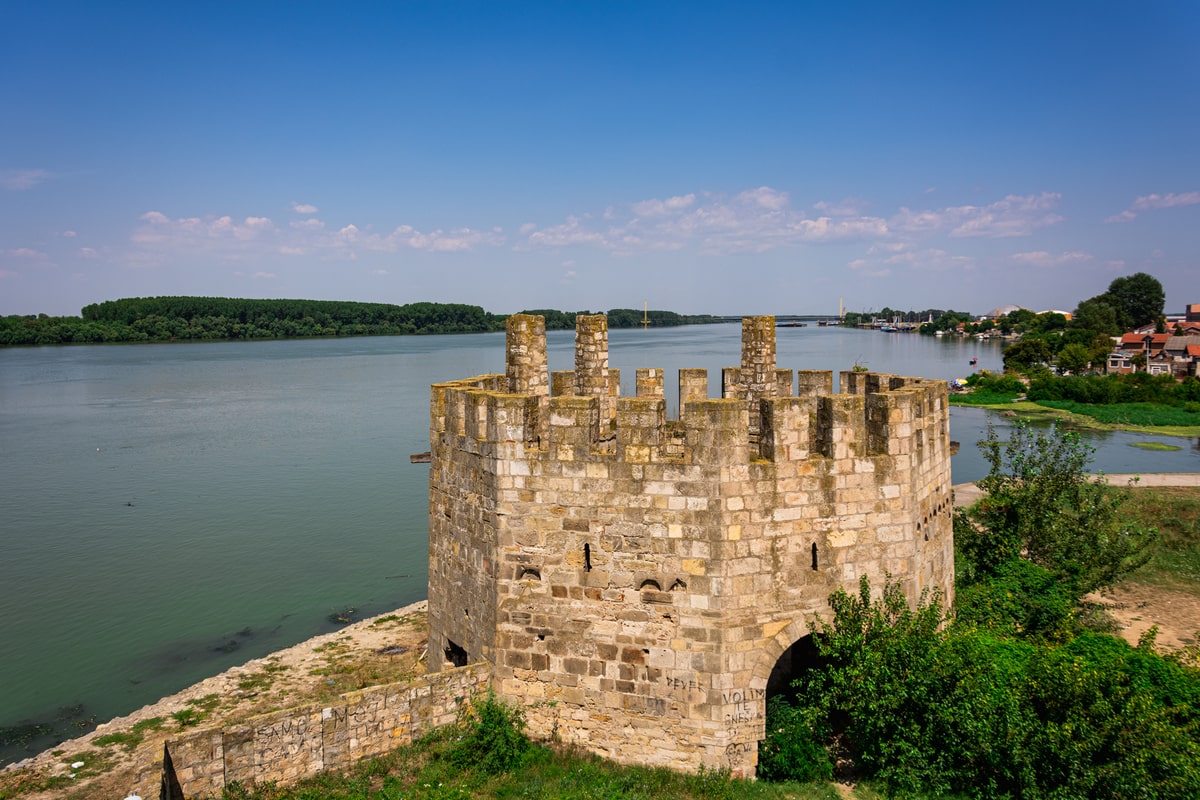Castles of Serbia
Court of Despot Đurađ Branković
Smederevo
Smederevo Fortress was a medieval fortified city that temporarily served as the country’s capital. It was built by despot Đurađ Branković in the first half of the 15th century, during the Serbian Despotate. At the end of the 15th century, the Turks added new fortifications to it. Although it went through several sieges by the Ottomans and Serbs, the fortress remained relatively undamaged. It was only in the Second World War that it suffered serious damage after a series of explosions in the heart of the fortress, as well as bombing. The fortress, which is “one of the few preserved courtyards of Serbian rulers of the Middle Ages”, is currently under restoration.
Smederevo Fortress was a medieval fortified city that temporarily served as the country’s capital. It was built by despot Đurađ Branković in the first half of the 15th century, during the Serbian Despotate. At the end of the 15th century, the Turks added new fortifications to it. Although it went through several sieges by the Ottomans and Serbs, the fortress remained relatively undamaged. It was only in the Second World War that it suffered serious damage after a series of explosions in the heart of the fortress, as well as bombing. The fortress, which is “one of the few preserved courtyards of Serbian rulers of the Middle Ages”, is currently under restoration.
The court of the despot Đurađ was located in the Small Town, with a residence for housing and a palace for receptions. The Small town has a donjon tower (keep), in the central part a stone masonry well, and the entrance was from the southwest side, through a double system of gates. There is little left of the court: four double-arched windows on the city screen remain from the only large hall to this day. In relation to the structure itself, the inner city is known for its audience hall, which is an important example of Serbian medieval architecture. High in the stone wall on the Danube side are carved four double-arched windows in a combination of Gothic and Romanesque style.

The state of the fortress’s deterioration varies widely, from the Cross Tower, which is still well preserved, to parts of the walls that have not ever been repaired and have collapsed in some places. Some towers are leaning, as seen in the photos. The fortress has been the focus of restoration and conservation efforts, followed by archaeological and architectural research, at least since 1970. Most of the work to date has been done between 1970 and 1995. While some parts have been at least partially repaired, others have only been preserved and are still in bad condition. Numerous cultural events are held in the fortress. A more comprehensive restoration is needed, if not a complete reconstruction similar to those done in Golubac, Ram and Fetislam.





